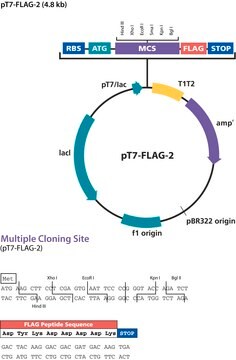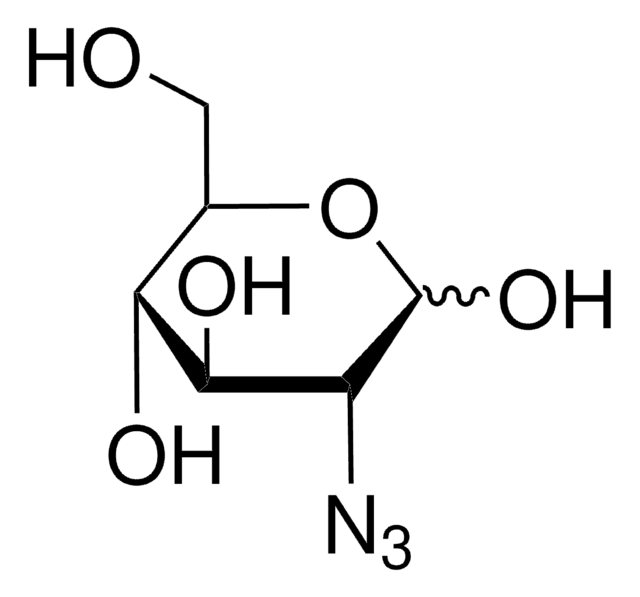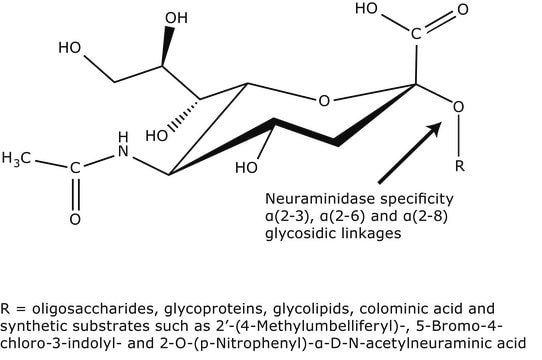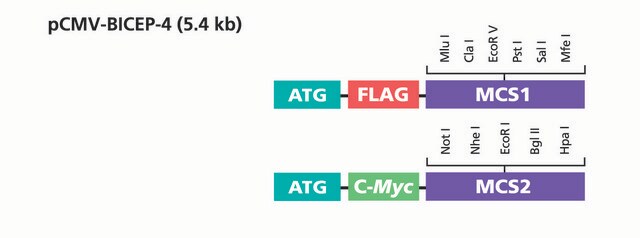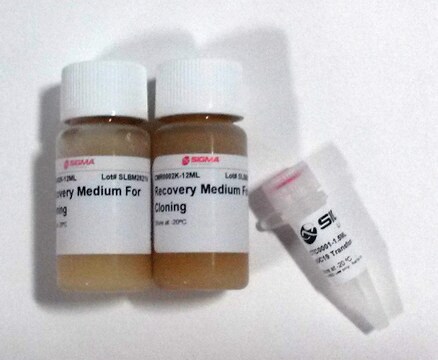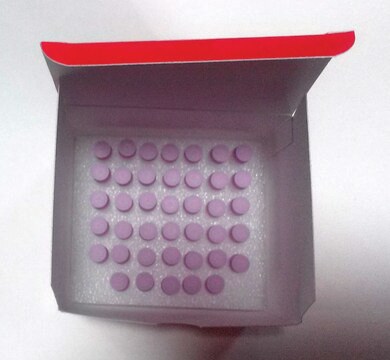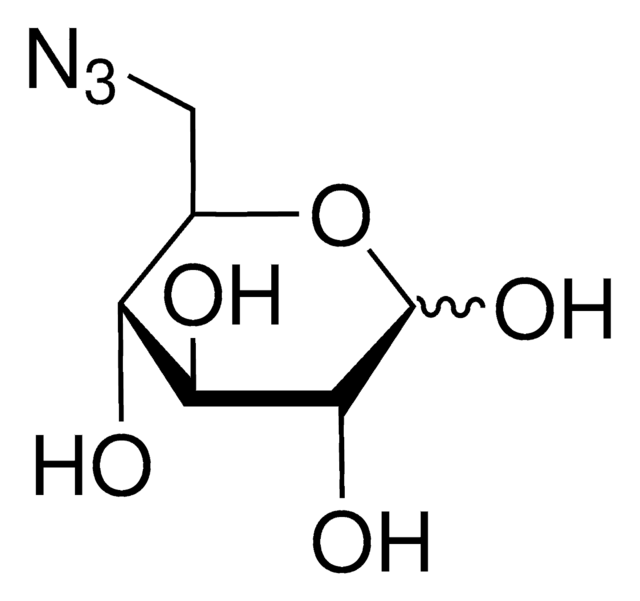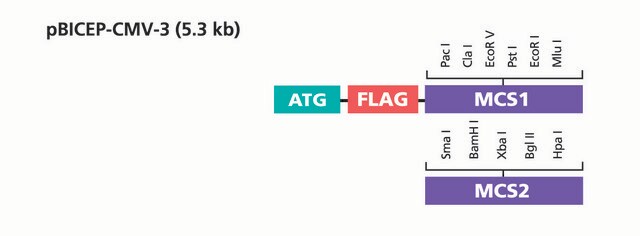PP2356
Mammalian Promoter Vector Set
plasmid vectors for molecular cloning
Synonyme(s) :
cloning vector, expression vector, molecular cloning vector, plasmid, plasmid vector, vector
About This Item
Produits recommandés
Forme
buffered aqueous solution
Sélection de bactéries
kanamycin
Origine de la réplication
pUC (500 copies)
Promoteur
Promoter name: CMV
Promoter activity: constitutive
Promoter type: mammalian
Conditions d'expédition
ambient
Température de stockage
−20°C
Description générale
Use this plasmid pack to compare six different mammalian promoters, each driving expression of your chosen gene inserted into the MCS. The pack includes strong viral promoters and constitutive mammalian promoters for maximum versatility. This should enable you easily to select the best promoter to express your gene of interest in your chosen cell type.This plasmid set has been designed to be compatible with a range of cloning techniques. The multiple cloning site contains a range of standard commonly used restriction sites for cloning. Using these sites genes can be inserted using standard cloning methods with DNA ligase. Other methods such as ligase independent cloning (LIC) Gibson Assembly InFusionHD or Seamless GeneArt can also be used and because all of our plasmids are based on the same backbone the same method can be used for cloning into all of our catalogue vectors.
Multiple cloning site notes: There are a few important sites within the MCS. These include the NcoI site the XbaI site and the BsgI and BseRI sites. The NcoI site contains a start codon that is immediately downstream of both a Kozak and Shine-Dalgarno ribosomal binding site. These allow for optimal positioning of genes when the start codon is placed in this location. If this is not required and you wish to use a downstream site for gene cloning you can remove the NcoI site by cleaving the plasmid with KpnI. The XbaI site contains a stop codon. This stop codon is positioned in a specific position in relation to the BsgI and BseRI sites that are immediately downstream. When either BseRI or BsgI cleave the plasmid they produce a TA overhang from the stop codon in the XbaI site that is compatible with all of our peptide tag plasmids cut with the same sites. BseRI and BsgI sites are non-palindromic and cleave a defined number of bases away from their binding site. Whenever we clone a gene into our multiple cloning site we always position the start and stop codon in the same positions in the MCS. If the start and ends of the genes are not compatible with NcoI and XbaI we extend the sequence to the nearest external sites but keep the start and stop codons locations consistent.
Transcription Termination:These plasmids contains three alternative transcription terminators for mammalian bacterial and bacteriophage (T7) expression. This means that only the promoter needs to be changed to alter the expression system you are using. We sell multiple promoters that can be used in each of these systems. The presence of each terminator does not reduce expression in the alternative systems.
Intellectual Property Status<p>According to our IP-friendly policy this plasmid is sold free of reach-through rights and can be used to make commercial products. However the plasmid itself (or derivatives) cannot be sold.
Séquence
Remarque sur l'analyse
Informations légales
Composants de kit également disponibles séparément
- OGS10PSF-CMV-KAN - KANAMYCIN RESISTANCE PLASMID, plasmid vector for molecular cloningFDS
- OGS43PSF-EF1 ALPHA - ELONGATION FACTOR ALPHA PROMOTER PLASMID, plasmid vector for molecular cloningFDS
- OGS46PSF-UB - UBIQUITIN PROMOTER EXPRESSION PLASMID, plasmid vector for molecular cloningFDS
- OGS146PSF-RSV - RSV PROMOTER PLASMID, plasmid vector for molecular cloningFDS
- OGS403PSF-PGK - PHOSPHOGLYCERATE KINASE PROMOTER PLASMID, plasmid vector for molecular cloningFDS
- OGS505PSF-CAG-KAN - CAG PROMOTER VECTOR, plasmid vector for molecular cloningFDS
Produit(s) apparenté(s)
Code de la classe de stockage
12 - Non Combustible Liquids
Point d'éclair (°F)
Not applicable
Point d'éclair (°C)
Not applicable
Certificats d'analyse (COA)
Recherchez un Certificats d'analyse (COA) en saisissant le numéro de lot du produit. Les numéros de lot figurent sur l'étiquette du produit après les mots "Lot" ou "Batch".
Déjà en possession de ce produit ?
Retrouvez la documentation relative aux produits que vous avez récemment achetés dans la Bibliothèque de documents.
Notre équipe de scientifiques dispose d'une expérience dans tous les secteurs de la recherche, notamment en sciences de la vie, science des matériaux, synthèse chimique, chromatographie, analyse et dans de nombreux autres domaines..
Contacter notre Service technique